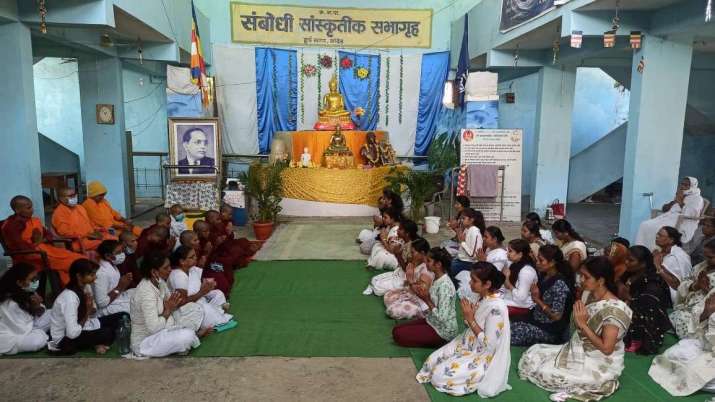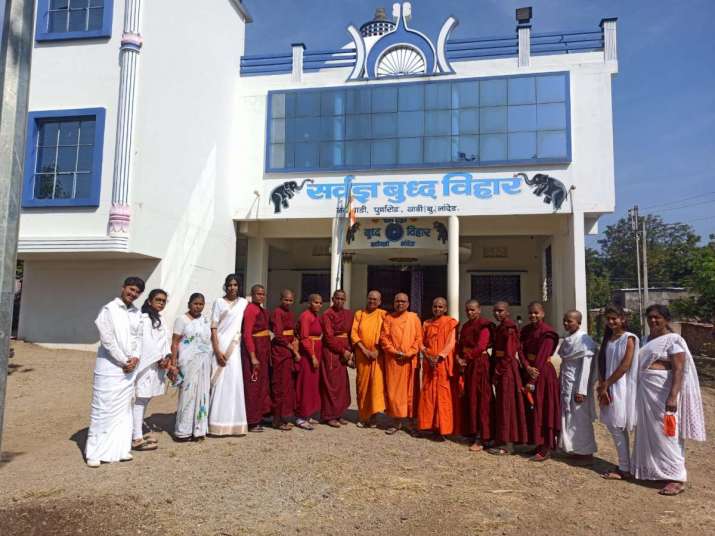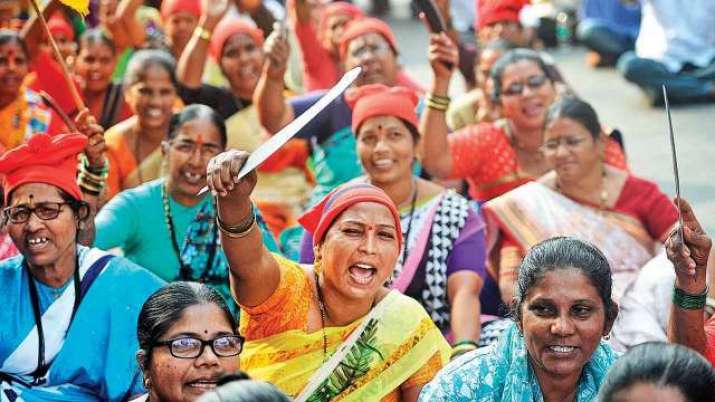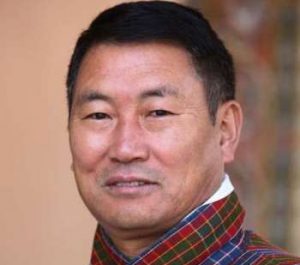
I measure the progress of a community by the degree of progress women have achieved. — Dr. B. R. Ambedkar
Buddhism is a radical movement. Not only because of its atheistic context in ancient India, but also because it evolved into its own religious tradition. The Buddha devised a new set of ethics by tying moral behavior to karma and rebirth, which set Buddhism apart from its Indic cousins. Buddhism, in particular Ambedkarite Buddhism, sees itself as initiating a revolution against the counter-revolution of Brahmanism (as distinct from Hinduism). The five precepts are based on ethical behavior rather than hierarchies and discrimination. They were prescribed by the Buddha in contravention of Vedic norms. The laws of the Vedas were rigid and harmful to the dispossessed of the Varna system, and even crueller to women. Basically, women were treated as assets, liabilities, and possessions of men. They had no rights to their bodies or minds. Vedic culture refined patriarchy to intolerable levels. This comparison is important because the misogyny of Vedic culture played an important role in the rise of Buddhism.
Siddhartha Gautama, the feminist
The buddha-to-be, Siddhartha Gautama, was part of the same Vedic culture. But in contrast to the secondary status of women in his culture, he took the surname of his aunt and adoptive mother, Mahaprajapati Gautami. This observation led me to think of the matriarchal environment in which Siddhartha grew up. It reminded me of how feminists can be created by being raised as one, and of the importance of mothers and women.
When Siddhartha attained enlightenment, he became the first proto-feminist by opening an alternative to family life for women through the monastic sangha. He was convinced to do so by Mahaprajapati and his wife Yashodhara, who came in robes and shaved heads with 500 Shakya women, ready to join the Buddhist order and thus form its female wing as the bhikkhuni sangha.
In my opinion, it was very courageous to take such a big step and become pioneers of the bhikkhuni sangha. No women before Mahaprajapati or Yashodhara had spearheaded a female spiritual movement in India. The Buddha accepted their plea and also called the female sangha the second important component of the Buddhist order. Buddhism is fundamentally based on gender equality, despite cultural distortions.
Another account of the Buddha’s proto-feminism was the story of Vishakha’s committee, which was formed by Buddha during a case of a pregnant bhikkhuni. In this scenario, he appointed the laywoman Vishakha to verify the public allegations against this nun. The Buddha not only presumed the bhikkhuni’s innocence, but also assigned leadership roles to women by making Vishakha head of a fact-finding committee. Vishakha herself was intelligent and courageous enough to take up this bold task.

Female Buddhist leadership
There are many female names in Buddhist history, such as the laywomen Amrapali and Sujata, or the bhikkhunis Khema and Nanda. They were all freethinking, independent women, irrespective of societal patriarchy and female norms. Apart from these names in Buddhist literature, there are other texts that mention stories of strong women, such as the bhikkhunis of the Therigatha.
In India, majoritarian Hinduism does not allow women to enter temples. But Buddhist women have always taken the lead in socio-cultural and religious events, such as organizing Vesak Purnima programs or Varshawas or Ambedkar Jayanti programs in the viharas. There were all-women committees (Mahila Mandal) in the viharas, in which women handled important posts. They managed the monastery and took care of the monastics residing there. They were not just regular students of the Dhamma, but responsible for caring for the young members of families visiting the monasteries. It was common to see a large number of women in the vihara during the Vandana festival and participating in vihara events. The older women took their grandchildren with them to the vihara to learn gathas and religious chants.
Right decision-making
Dr. B. R. Ambedkar (1891–1956) wrote in the Indian Constitution that women deserved equal rights, and said that this concept of equality was based on the principles of Buddhism. In 1956, Ambedkar converted to Buddhism along with large numbers of Dalits at Nagpur’s Dikshabhoomi. This sent a twofold message to Dalit women, who were doubly disadvantaged. Firstly, they could free themselves from Hindu traditions and superstitions that constrained or denigrated their dignity and self-esteem. They would be able to see themselves as fully human, not shudras within the varna system. Secondly, they no longer needed to see themselves as inferior to men. In India, patriarchy is the default mode of gender relations for both men and women. Gender is a social construct, but one that has been deeply rooted for thousands of years. Even women support this social construct and assume themselves to be inferior to men and incapable of particular physical or mental tasks and leadership roles.
Religion in India regulates social behavior, community identity, and everyday ethics, while constitutional laws regulate national life. In the Indian context, Buddhist women have greater freedom to choose their own path: whether to marry and raise a family, enter monastic life, or undertake higher education or a career in the performing arts. Religion is no longer one of many hurdles for Buddhist women.
In an interview I did some time ago with one Rajaram Patil from Maharashtra, who belongs to the Agri Koli fisher community (they see themselves as indigenous Buddhists since the Buddhist caves in the coastal Konkan region were carved by the Agri Kolis), Patil emphasized that they have a matriarchal culture. They follow women as the heads of the family and of their finances. He credited this culture to Buddhism, saying: “We follow this culture in conscious contravention to the majoritarian patriarchal culture. We are descendants of Queen Mahamaya, whom we call Ekveera (mother).” This culture has taught the Agri Kolis to respect women as community leaders as “Koliya, descendants of Mahamaya Ekveera, proud Buddhist women of India.”

The media’s portrayal of women
Indian media often objectify women, simplifying their experiences and either glorifying them as glamourous feminine divinities or silencing them as victims that need male saviors, who will assault them while also presuming to speak for them.
When I worked with a Buddhist broadcast media outlet, I hosted a studio-based Hindi-language interview show called Hum Betiya Savitri ki. I was able to meet a lot of women and see how they became protagonists of their own lives, with no need to be dependent on men. During my journalistic profession, I observed that Buddhist women, particularly the Ambedkarite ones, were more confident in taking control of their life decisions and breaking religious impositions. These women were all self-dependent, regardless of whether they came from the countryside or the city, were educated or barely literate. The Buddhist Ambedkarite women of Maharashtra also have higher divorce rates, since they can choose a self-sufficient life for themselves and their children rather than being bruised everyday by an abusive or neglectful husband. Their strength comes from a hybrid value set of liberal Buddhism and the ideals of the Indian Constitution, which protects their rights as human beings.
Bhikkhunis: the women in robes
The second wheel of the Dhamma caravan is not in good shape. Once so central, bhikkhunis have become “invisible” Buddhist women for thousands of years. Even if we have ample literature about bhikkhunis in the Therigatha, everyone knows that the number of bhikkhunis in India has decreased dramatically.
I cannot find any record of an Indian bhikkhuni’s name after the legendary bhikkhuni Sanghamitra, daughter of Emperor Ashoka (who was himself a pioneer of the ancient, global bhikkhuni sangha, since he helped ordain 500 women along with princess Anula in Sri Lanka). Soon after Ashoka’s death, Buddhism slowly began to decline on the Indian subcontinent. In many countries, becoming a bhikkhuni became a punishable offense. Today, many countries do not allow women to wear kasaay vastra (saffron robes) or to be called bhikkhunis. Some countries have pink or white robes for women, who are called maechi, thilashin, dasa, sil, mata—anything but bhikkhunis. Indians too have nowadays started calling them arya-ji.
There is a lot of confusion and misunderstanding among Buddhists that buy into the patriarchal narrative. Many believe that the Buddha did not want women to be ordained outright, or that he acquiesced only because of Ananda’s plea, noting that bhikkhunis would remain subordinate to bhikkhus (such as a senior bhikkhuni having to bow before a newly ordained bhikkhu). This does not seem to be the Buddha’s teaching and is also a very impractical, strange insertion into the literature.
The Buddhist literature (99.9 per cent of which was written by men centuries after the Buddha’s life) indicates clearly that there was an active and obvious conspiracy to twist the Buddha’s intentions and apply Brahmanical patriarchy to Buddhism. Sadly, the liberal Dhamma imparted to us by the Buddha has also been twisted by patriarchal discrimination.
Many bhikkhus cling to these mistaken narratives due to vested interests and patriarchal conditioning. Their egos will not let them treat bhikkhunis as equals, even if a bhikkhuni is senior to them in terms of knowledge and experience. This is, of course, the textbook definition of patriarchy. Our bhikkhunis still face gender discrimination by both learned and less educated Buddhist men.
The history of the bhikkhuni sangha provides a profile in strength and courage in how Mahaprajapati left the lay life and formed a bhikkhuni community by her own initiative, not the Buddha’s. The story still motivates women to fight back against all kinds of gender discrimination and to focus on the work of preaching the Dhamma.
It is an anachronistic myth that the Buddha said that the Dhamma would remain on Earth for only half of its original span if he ordained women as bhikkhunis. The Dhamma is still here and alive, often thanks to women. It is time for women to continue preaching the Dhamma to keep it alive, and indeed lead their communities as Dhamma propagators.











